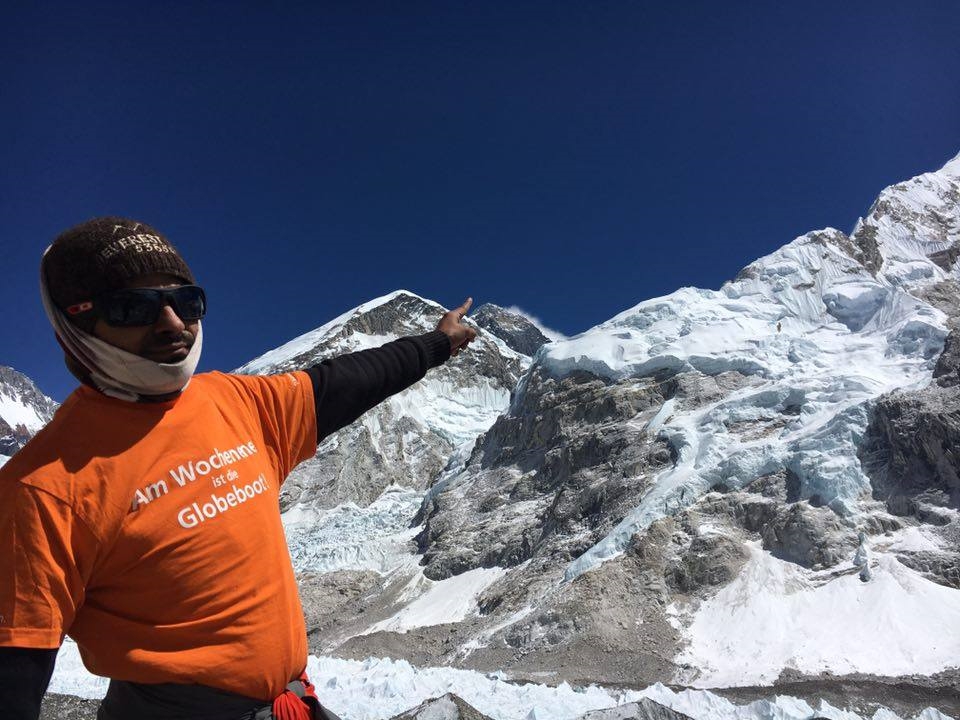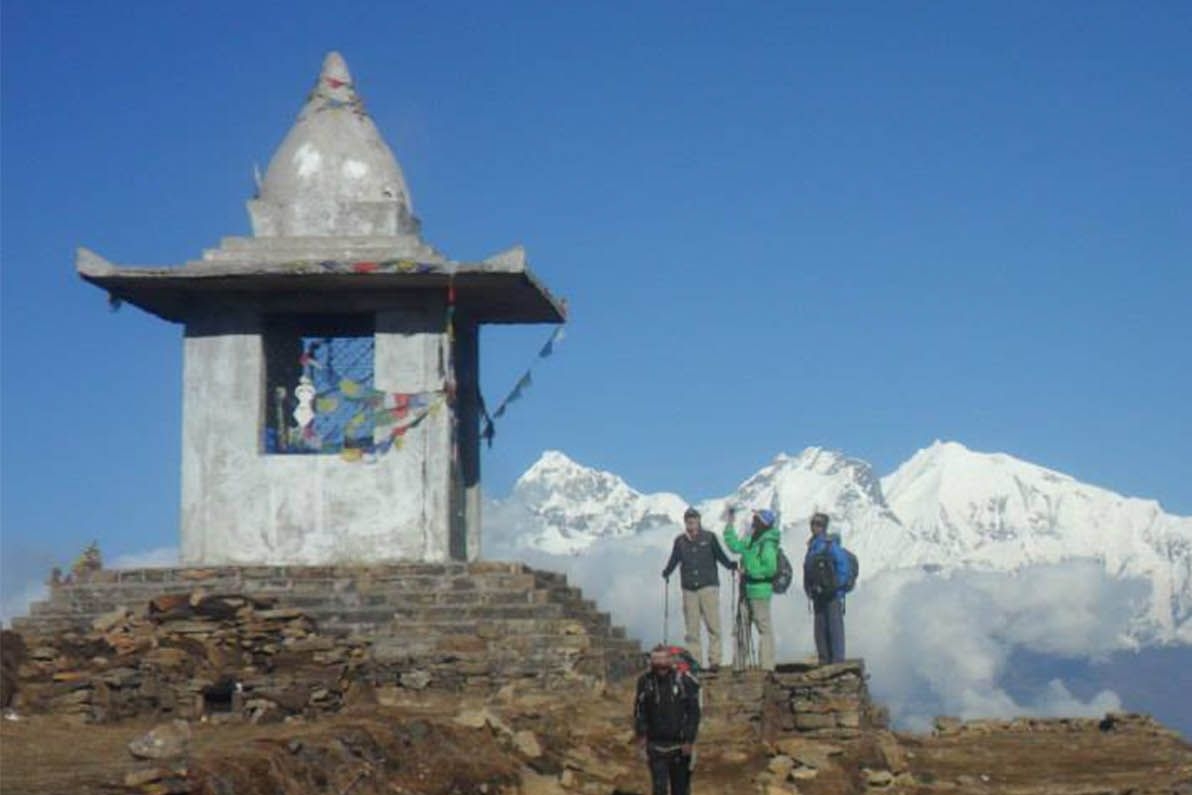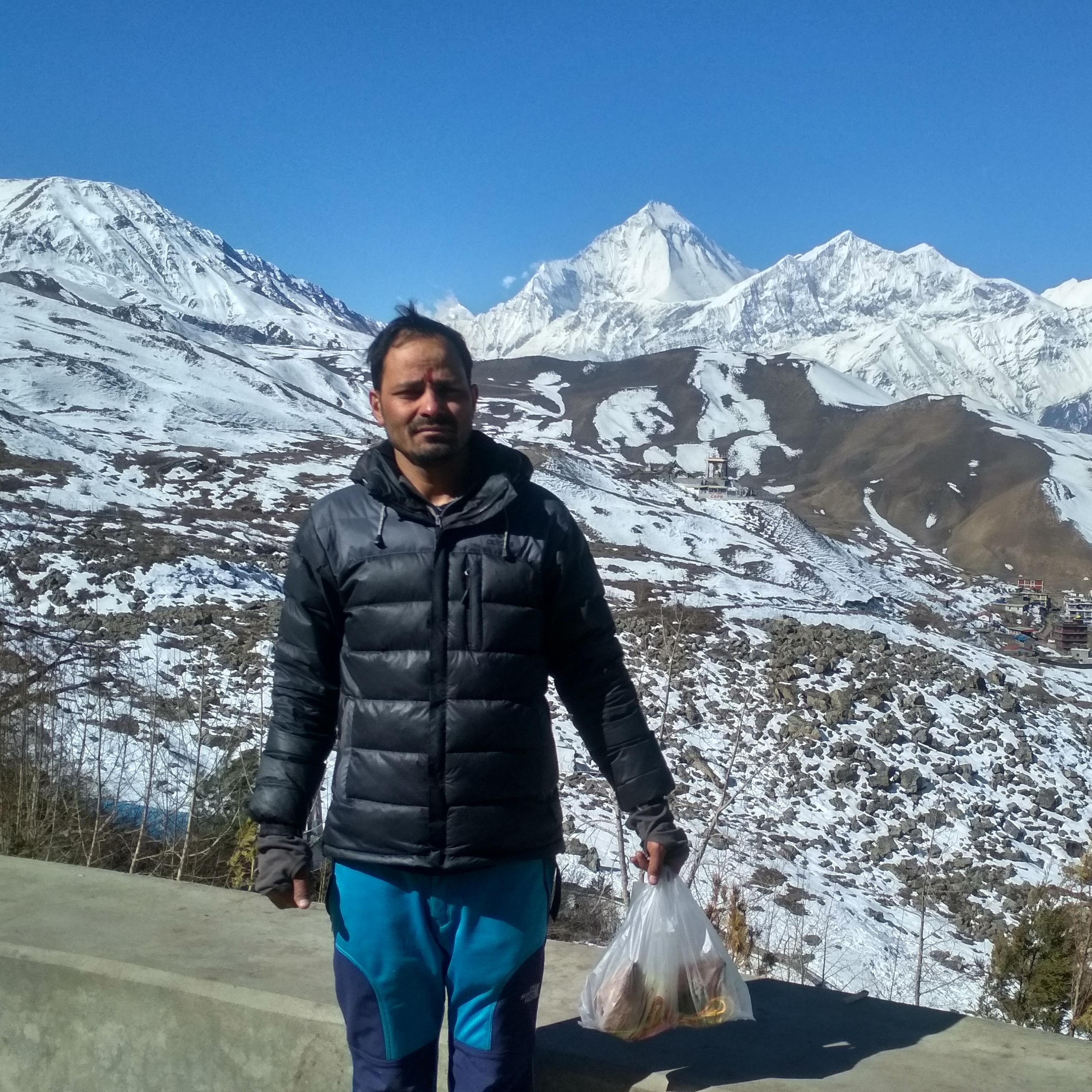Langtang, Gosainkunda and Helambu Trek
Langtang, Gosainkunda and Helambu Trek Highlights
- Trek through dense forests of rhododendron, oak trees, bamboo, and pass by Langtang River
- Langtang National Park
- Gosaikunda- holds great religious significance for both Hindus and Buddhists
- Witness the serene lake, visit nearby monasteries, and observe religious rituals
- Interact with the people and experience their unique culture
- Kyanjin Gompa (3870 m) Buddhist monastery in the Langtang region
- Panoramic views of majestic mountain peaks, including Langtang Luring, Ganesh Himal, Annapurna range, and Dorje Lakpa
Langtang, Gosainkunda and Helambu Trek is a natural setting which can be found in the Himalayan valley of Langtang, located in the north-central Nepalese mountains. The Langtang National Park includes the Langtang Valley. There are many different climatic zones in the park, ranging from subtropical to alpine. There is about 25% forest in the park. Among the trees are maple, deciduous oak, and evergreens like pine and rhododendron.
Situated at an elevation of 4380 meters in the Langtang region of the Himalayas, Gosaikunda is a sacred lake that is highly significant to both Buddhists and Hindus in terms of religion. You’ll be rewarded with stunning views of the lake encircled by mountains covered in snow. Additionally, it’s said that bathing in Gosaikunda’s sacred waters can bless you and wash away your sins.
Helambu is a region in the Sindhupalchowk District of northern Nepal, close to the country’s capital, Kathmandu, at an elevation of 4,500 meters. It is well-known for its verdant fields, thick forests, traditional villages, Buddhist monasteries, and expansive vistas of the Himalayan mountain ranges. With a variety of vegetation (including rhododendron forests, oak trees, and bamboo groves) and wildlife (including red pandas, Himalayan black bears, musk deer, and other species), the area is rich in biodiversity.
The popular and rewarding Langtang, Gosaikunda, and Helambu trek in Nepal traverses three stunning regions, including high mountain passes, glacial lakes, lush forests, and traditional villages. The hike offers a wide variety of scenery, breathtaking views of the mountains, and cultural encounters.
Foods and Lodging
While the quality and availability of lodging may change throughout the trek, the majority of teahouses typically offer simple rooms with a bed and shared restrooms. Compared to Gosaikunda, which has fewer teahouses, Langtang and Helambu offer a greater selection of lodging options.
Tea shops and lodges typically serve a wide variety of delectable foods to accommodate different types of hikers. Since all of the food will be prepared by a local chef using vegetables from the area, it will have a very distinctive flavor. A staple dish of Nepali cuisine is dal bhat, a curry made with organic, healthful fresh green vegetables. On the other hand, food from the numerous teahouses has continental, Italian, Tibetan, Indian, and Nepali flavors.
Best season to Visit
The spring (March to May) and autumn (September to November) seasons are the best for the Langtang, Gosaikunda, and Helambu treks in Nepal because they provide the best weather, clear skies, and stable trekking routes. It’s a wonderful time of year to take in the breathtaking views of the mountains and the brilliant colors of nature.
It is noteworthy, though, that the Langtang, Gosaikunda, and Helambu treks can be done in the winter and monsoon, though there are some restrictions. For example, the monsoon season, which runs from June to August, brings a lot of rain, which can muddy the trails and raise the possibility of landslides. Similarly, the trek becomes more difficult in the winter (December to February) due to the lower temperatures and increased likelihood of snowfall.
Permits
- Langtang National Park entry permits.
- Trekkers’ Information Management System (TIMS).
- Gosaikunda Conservation Area Permit.
Guide and Porter
“All trekkers are required to obtain services of a licensed trekking guide and to obtain TIMS card through authorized trekking agencies registered with the government of Nepal,” states the Nepal Tourism Board.
Hiking with a qualified, experienced trekking guide is always a good idea. You can therefore join us for a very knowledgeable, helpful, amiable, and licensed English-speaking guide with guide insurance. We guarantee that, without sacrificing your safety, our guide will assist you in making the most of your precious time.
Travel Insurance
It is strongly advised that you get travel insurance before starting any trek in Nepal, including the Gosainkunda, Helambu, and Langtang treks. Make sure your travel insurance covers things like high-altitude trekking, medical costs, helicopter emergency evacuation, trip cancellation, and loss or theft of personal belongings when you purchase it. In the case of an unplanned accident, it can provide you with financial security and peace of mind.
Altitude sickness
You might experience symptoms like nausea, headaches, dyspnea, elevated heart rate, and uneasiness when rapidly ascending. Additionally, if the symptoms last longer than expected, your body may not have been able to withstand the altitude change. Thus, kindly inform your group and your guide if you experience any of these symptoms. You will receive first aid right away from your guide.
Here are some tips to reduce your risk of altitude sickness:
- Stop and rest where you are.
- Do not go any higher for at least 24 to 48 hours.
- Make sure you are drinking enough water.
- Do not smoke, drink alcohol, or exercise.
- Eating foods and drinking fluids that contain carbs such as bread, pasta, fruits, milk, rice, etc.
Langtang, Gosainkunda and Helambu Trek Itinerary
Drive from Kathmandu to Syabrubesi
Trek from Syabrubesi to Lama Hotel
Trek from Lama hotel to Langtang
Trek from Langtang to Kyanjin Gompa
Acclimatization Day at Kyanjin Gompa
Trek from Kyanjin Gompa to Lama Hotel
Trek from Lama Hotel to Thulo Syabru
Trek from Thulo Syabru to Sing Gompa
Trek from Sing Gompa to Gosasikunda
Trek from Gosaikunda to Ghopte
Trek from Ghopte to Melamchigaon
Trek from Melamchigaon to Tarke Gyang
Trek from Tarke Gyang to Sermathang
Trek from Semrathang to Melamchi Bazzar and Drive to Kathmandu
Langtang, Gosainkunda and Helambu Trek Inclusions
What's included
- Langtang National park permit and TIMS card
- From Kathmandu to Syabrubesi to Kathmandu by local bus (if you want to use by jeep you pay Extra charge for jeep)
- Three times meals a day- Breakfast, Lunch, Dinner and accommodation in teahouse/ lodge during the trek
- One experienced (government licensed) and qualified English speaking guide
- One porter for two trekkers
- Guide/ Porters: food, lodge, transportation, salary, insurance, equipment etc
- All tax and company service charge
- Equipment (sleeping bag and down jacket )
Add-ons
What's not included
- International airfare and visa fees
- Lunch and dinner in Kathmandu
- Personal expenses of bar and beverage bills, WiFi, hot shower, bottle of water, extra porters, laundry or any other things which are not mentioned by the company
- Your trekking gears and extra nights in a certain destination
- Your travel insurance which should include the emergency rescue
- Tips for your guide and porters
- Entrance fees during the sightseeing
- Extra expenses due to any event such as strikes, weather conditions, or flight delays
Langtang, Gosainkunda and Helambu Trek FAQs
Are there facilities of electricity and internet/Wi-Fi available on Langtang valley Gosainkunda lake trek?
Absolutely, there are guesthouses and lodges along the Langtang Valley Gosainkunda Lake trek that have electricity and internet/Wi-Fi. However, it may not always function properly, so it's a good idea to inquire in advance.
How are the lodge and foods during the Langtang valley Gosainkunda lake trekking?
Basic but comfortable lodge accommodations are standard for the Langtang Valley Gosainkunda Lake trekking, and a variety of dishes including continental, Chinese, Indian, Nepali, and Tibetan cuisines are served at the lodge restaurants.
Is it possible to take a helicopter for the Langtang Gosainkunda trek?
For the Langtang Gosainkunda trek, a helicopter ride is an option as well; it provides a more expedient and convenient way to get to some destinations along the way.For the Langtang Gosainkunda trek, a helicopter ride is an option as well; it provides a more expedient and convenient way to get to some destinations along the way.
What types of fauna we can see during this trek?
In the Langtang region trek, adventurers may encounter diverse fauna, including the elusive red panda, Himalayan Tahr, snow leopard, langur monkeys, and various deer species. Pheasants, eagles, and vultures grace the skies, making the area a birdwatcher's paradise and adding special wildlife encounters to the trekking experience.




